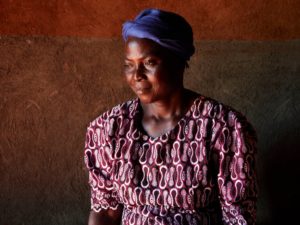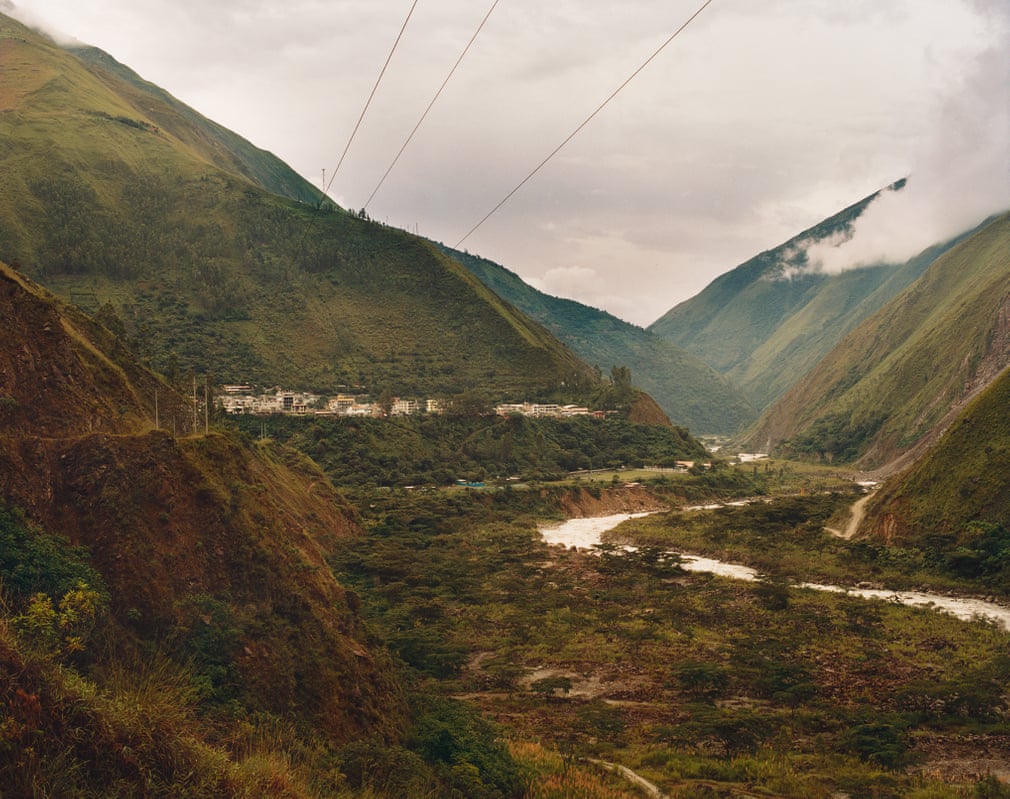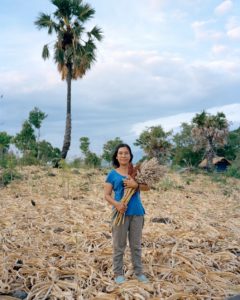The following photo story was originally published in The Guardian on 9 October, 2018:
“Five photographers follow the challenges facing small-scale farmers, and their pioneering solutions for a farming system that does not cost the planet.
The We Feed the World exhibition runs at the Bargehouse Gallery, Southbank, London, 12-21 October
ZIMBABWE, PIETER HUGO, THE MUONDE TRUSTE

Photograph: Pieter Hugo/We Feed the World
Ancient Solutions to New World Problems: When Benedict Muzenda and his neighbours were children, they finished their school exams in October so they could come home to spend the summers weeding the fields, ready for harvest in January. Now the rains still haven’t come by the time school’s over, the fields are bare and the harvest is getting later and later. The annual drought in this part of Southern Zimbabwe has left farmers looking for new ways to produce food and finding the best solutions in the tried and tested methods of the past.

Photograph: Pieter Hugo/We Feed the World
The farmers at the Muonde Trust in the Mazvihwa region are part of a growing movement of African farmers who are reviving their indigenous seeds as they offer far greater resilience in the face of climate change. Crops such as sorghum and bulrush millet, that populated these valleys long before maize was introduced are better suited to withstand long periods without water.

Photograph: Pieter Hugo/We Feed the World
These small grains are also adapted to local soil conditions making it easier for them to grow in the dry valleys of Zimbabwe. As the local elders will tell you, these are the grains blessed by the “mwaris” and “the spirits of the land” and able to feed the local community far better than the hybrid industrial seeds that have dominated the African landscape for the last 30 – 40 years.

Photograph: Pieter Hugo/We Feed the World
Photographer, Pieter Hugo, spent two days with the farmers at the Muonde Trust, shooting portraits and still-life images. Pieter’s highly regarded work is represented in prominent public and private collections, including the Museum of Modern Art, V&A, San Francisco Museum of Modern Art, Metropolitan Museum of Modern Art, and the J Paul Getty Museum.
SOMERSET, KATE PETERS, GLEBE FARM

Photograph: Kate Peters/We Feed the World
Weather patterns not seen in 200 years, say UK farmers: In the UK, climate change is often seen as a challenge affecting those in the global south. But for Somerset farmers Rob and Lizzie dramatic weather is changing generations of farming traditions. The Walrond family have farmed on the Somerset Levels for 200 years and say the last 10 have been the most difficult: “There has always been unpredictability … but in the past, you might have had a ruined harvest due to flooding or drought once every 20 years, now it’s happening every year,” says Lizzie.

Photograph: Kate Peters/We Feed the World
Weather changes are affecting the whole farming community. Long, wet winters delay planting which means the “hungry gap”– the traditional period in spring when there is little fresh produce – is getting longer while hotter summers leave crops such as barley struggling for moisture, and brassicas wiped out by pests normally killed off by the first frosts. “It’s not a healthy pattern,” said Rob “and you never know what you’re going to get next.” Last year, the Walrond’s neighbours brought in the last wheat in early December – unheard of in the UK where the traditional wheat harvest is August.

Photograph: Kate Peters/We Feed the World
Rob believes we all have a role to play in the stewardship of the climate and our food supply. “Food is the most important thing to our health and our life, yet we degrade it and don’t value it properly. People don’t get it, because they’ve been sold this image that supermarkets want them to see. It’s about everybody taking responsibility, taking more interest in their food and where it’s produced. Farmers will only produce to what the consumer wants. At the end of the day, the consumer has the final say.”

Photograph: Kate Peters/We Feed the World
Kate Peters is an award-winning British photographer producing portrait and documentary work around the world. Her work has been exhibited internationally including a solo show at the HPGRP gallery in New York.
PERU, NIALL O’BRIEN, HUADQUIÑA CO-OPERATIVE

Photograph: Niall O’Brien/We Feed the World
Climate change has shifted the coffee season forward: In the words of Hebert Quispe Palomino, manager of the Huadquiña co-operative, “cafe con historia, cafe con mañana” (coffee with a history, coffee with a tomorrow) is what defines this organisation in Santa Teresa, La Convención. Huadquiña represents over 300 smallholder farmers, and has been working on creating a sustainable model of production while pests, diseases and climate change continue to exacerbate coffee supply problems worldwide.

Photograph: Niall O’Brien/We Feed the World
Through a 20-year partnership with Cafédirect, a UK-based Fairtrade coffee and tea organisation who use Huadquiña’s beans, there has been investment in a Norandino Centre of Excellence for Climate Change. This has helped the cooperative to embrace agroforestry techniques and diversify coffee varieties. Hebert said: “This diversity is a key way of developing greater resilience in the face of climate change, which is a growing threat to the local population in the province. Indeed, climatic changes have already shifted the traditional coffee season forward one or two months in recent years.”

Photograph: Niall O’Brien/We Feed the World
Agroecological methods that respect the land and embrace biodiversity are an important part of the spiritual history attached to the co-operative. Hebert explains: “The members of the co-op have a spiritual relationship with their land that dates back millennia. Before we do anything to our land we first ask permission of the apus (spirit of the mountains). Our elders always taught us that the apus will tell us when there will be a good harvest. In the post-harvest fermentation, we pay particular attention to the lunar cycle, because the coffee ferments best when the moon is full.”

Photograph: Niall O’Brien/We Feed the World
Niall O’Brien is an award-winning photographer who travelled to Peru to document the stories of the Huadquiña co-operative, established in the wake of an anti-colonial movement in the 1960s. Based in the UK, O’Brien is famous for his collective work Good Rats.
INDONESIA, MARTIN WESTLAKE, EAST FLORES

Photograph: Martin Westlake/We Feed the World
Women Revive Ancient Grains to Combat Climate Change: Community leader, Maria Loretha, spent months travelling from village to village talking to the elders before she eventually found the native sorghum seed varieties that used to grow prolifically in this region of Indonesia. The ancient crop – now known in the West for its superfood qualities had all but died out on the island of East Flores after successive governments encouraged farmers to grow commercial white rice varieties instead; dubbing sorghum an inferior crop that should be fed to animals.

Photograph: Martin Westlake/We Feed the World
The difficulty for the communities of East Flores is that the changing weather patterns left them with little or no rain, and their rocky soils didn’t support the same wet-field based agriculture that allowed rice and maize to flourish in other parts of Indonesia. Despite tonnes of chemical fertilisers, successive crops failed, and families were left hungry, in debt and faced with the prospect of leaving to become migrant workers.

Photograph: Martin Westlake/We Feed the World
Instead, Maria mobilised the women of the Likotuden area to plant 30 acres of sorghum from the old seed varieties she had collected. The crop is more labour intensive, but it requires less water, critical in a changing climate, and is more nutritious than many other grains. The initiative, which involved 62 families initially, has proved so successful it has now expanded to other parts of Indonesia.

Photograph: Martin Westlake/We Feed the World
For the women, pictured here, sorghum has become the route to independence, allowing them to break free from a reliance on chemical fertilisers and pesticides, from the devastating impact of drought and a cycle of poverty. It has brought them the food sovereignty they need to move into the future. Martin Westlake is an award-winning British photographer who lives in Jakarta, He photographed the women of Likotuden in November 2017 and went back last month to show them the results. They were delighted to see themselves being celebrated in this way. Martin will be speaking at the exhibition.
AUSTRALIA, KATRIN KOENNING, NEW SOUTH WALES

Photograph: Katrin Koenning/We Feed the World
Surviving the Worst Drought in a Hundred Years: As farmers in New South Wales face their worst drought since 1903, the godfather of a new agricultural system is more convinced that the solutions to such climatic disasters lie in watching and mimicking Nature. His own transformation to organic farmer came 25 years ago, when a devastating bush fire wiped out most of his flock, his home and almost took his life. It left Colin Seis with no money to buy the fertilisers and he was forced to rethink his approach to farming.

Photograph: Katrin Koenning/We Feed the World
After much reflection, Seis decided to follow nature’s lead and maximise the diversity of his farm by planting cereal crops such as oats and barley into perennial pasture, thus allowing the “weeds” to provide a cover for his food crops. It’s a technique now known as pasture cropping. Furthermore, he moved his sheep around the land to graze as they might have done thousands of years ago, allowing the animals to clear up and recycle the leftover crops and turn it once again into fertile pastureland.

Photograph: Katrin Koenning/We Feed the World
Pasture cropping is now practiced on more than 2,000 farms in Australia and is spreading throughout the world. Colin’s disaster led him to be a role model for a method of farming that provides both crops and meat while also regenerating the soil for generations to come. It may also be the best line of defence many farmers now have against the ravages of climate change.

Photograph: Katrin Koenning/We Feed the World
German photographer, Katrin Koenning’s work has been published widely in volumes such as Firecrackers: Female Photographers Now, Photographers’ Sketchbooks, Hijacked III, the New York Times, Financial Times Magazine, California Sunday Magazine, National Geographic, Der Spiegel Magazine, the Guardian and ASX amongst others.”
Cover photo: Farmers in Mazvihwa, Zimbabwe are reviving indigenous seeds as they offer far greater resilience in the face of climate change. Photograph: Pieter Hugo/We Feed the World
